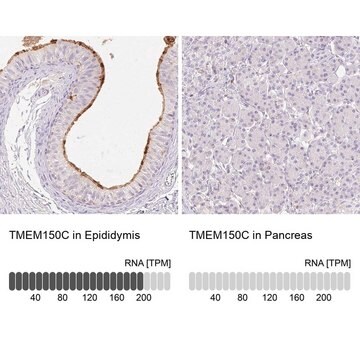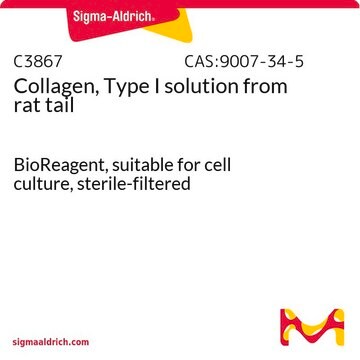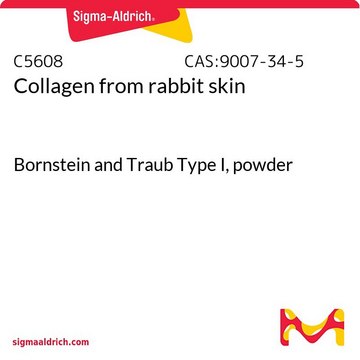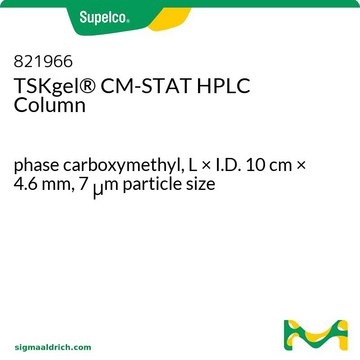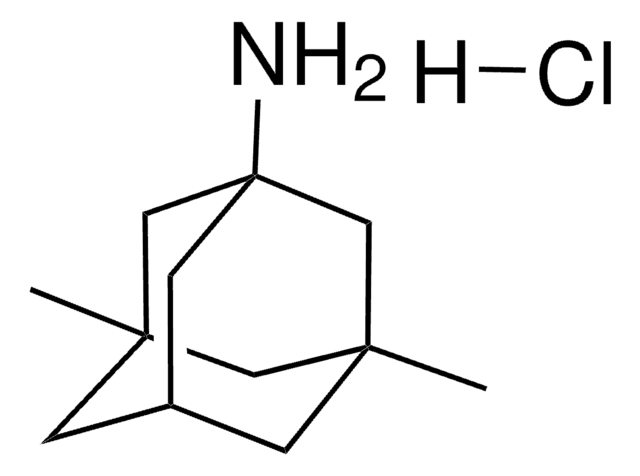ABN2266
Anti-Tentonin 3/TMEM150c
from rabbit
Synonim(y):
Transmembrane protein 150C, TTN3, Tentonin 3
About This Item
IF
IHC
WB
immunofluorescence: suitable
immunohistochemistry: suitable
western blot: suitable
Polecane produkty
pochodzenie biologiczne
rabbit
Poziom jakości
forma przeciwciała
affinity isolated antibody
rodzaj przeciwciała
primary antibodies
klon
polyclonal
reaktywność gatunkowa
mouse, rat
opakowanie
antibody small pack of 25 μL
metody
immunocytochemistry: suitable
immunofluorescence: suitable
immunohistochemistry: suitable
western blot: suitable
izotyp
IgG
numer dostępu NCBI
numer dostępu UniProt
Warunki transportu
ambient
docelowa modyfikacja potranslacyjna
unmodified
informacje o genach
mouse ... Tmem150C(231503)
Opis ogólny
Specyficzność
Immunogen
Zastosowanie
Immunocytochemistry Analysis: A representative lot detected Tentonin 3/TMEM150c in HEK293T cells transfected with TTN3. (Hong, G.S., et. al. (2016). Neuron. 91(1):107-18).
Western Blotting Analysis: A representative lot detected Tentonin 3/TMEM150c in F11 rat DRG cells (untransfected and TTN3 transfected cells) (Hong, G.S., et. al. (2016). Neuron. 91(1):107-18).
Neuroscience
Jakość
Western Blotting Analysis: A 1:2,000 dilution of this antibody detected Tentonin 3/TMEM150c in 10 µg of F11 cell lysate.
Opis wartości docelowych
Postać fizyczna
Przechowywanie i stabilność
Inne uwagi
Oświadczenie o zrzeczeniu się odpowiedzialności
Nie możesz znaleźć właściwego produktu?
Wypróbuj nasz Narzędzie selektora produktów.
Kod klasy składowania
12 - Non Combustible Liquids
Klasa zagrożenia wodnego (WGK)
WGK 1
Temperatura zapłonu (°F)
does not flash
Temperatura zapłonu (°C)
does not flash
Certyfikaty analizy (CoA)
Poszukaj Certyfikaty analizy (CoA), wpisując numer partii/serii produktów. Numery serii i partii można znaleźć na etykiecie produktu po słowach „seria” lub „partia”.
Masz już ten produkt?
Dokumenty związane z niedawno zakupionymi produktami zostały zamieszczone w Bibliotece dokumentów.
Nasz zespół naukowców ma doświadczenie we wszystkich obszarach badań, w tym w naukach przyrodniczych, materiałoznawstwie, syntezie chemicznej, chromatografii, analityce i wielu innych dziedzinach.
Skontaktuj się z zespołem ds. pomocy technicznej